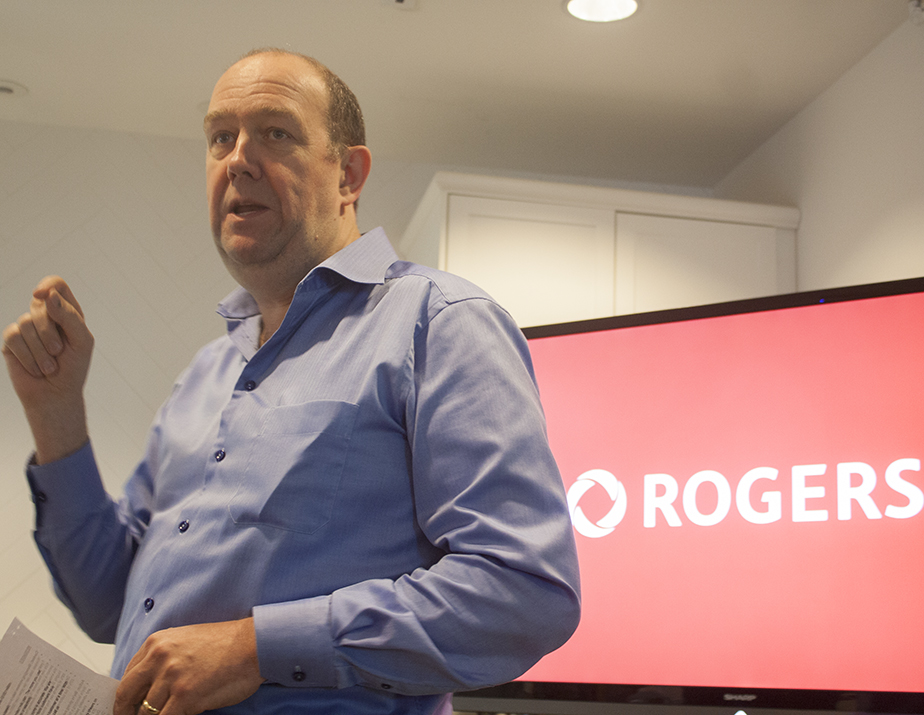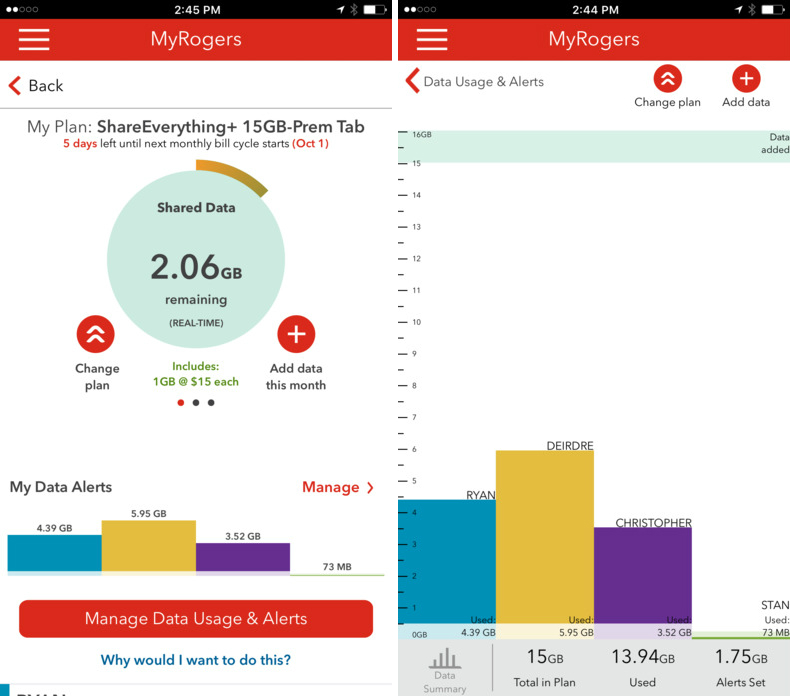
At first, Rogers worry-free data management may not seem like a big deal — after all, it’s just an app update promising the vague benefit of better data management for the company’s Share Everything plans.
But in reality, it may provide a significant shake-up to the Canadian wireless market. What the new feature provides is the ability to set limits on your family members’ data individually, and completely cut them off if they go over that amount. Additionally, Rogers has worked to make the updates real-time, promising nearly instantaneous information with just a refresh of the app.
At a press lunch held on October 6th, Rogers CEO Guy Laurence said that a lot of time and money went into the update. To be specific, “millions and millions, and hundreds of engineers working for over a year.”
Not only that but Laurence adamantly stated that the new feature would be “as big as Roam Like Home.”
Roam Like Home 2.0
For those unfamiliar with that service, Roam Like Home is Roger’s international roaming program that automatically switches on when a customer leaves the country, allowing them to pay $5 per day in the U.S. and $10 in other international locations to use their Canadian plan.
The carrier launched the service in late 2014, pioneering the idea in Canada. Laurence calls it Rogers’ “most popular proposition,” and the “thing that customers love the most about us.”
Roam Like Home, however, addressed only the first of five major customer irritants that Laurence says he outlined at the beginning of his nearly three-year tenure at Rogers. The next three issues, in order, were bill confusion, limits on wired internet and the desire for more self-service options for customers who want to avoid the call centers.
All have been addressed, in one manner or other — through a new billing format, the addition of several unlimited internet plans and social media-based customer service (which now boasts over 250,000 customers per month), respectively.
The last to be ticked off the list, but according to Laurence “perhaps the most prevalent,” is data management.
With the new feature, Laurence stressed several times over the span of his presentation, Rogers is “passing control back to the customer.”
Giving customers the reins to their own data
Laurence stated he believes it was not so much data prices that made customers anxious, but their lack of control in how it was allocated amongst the members of their plan.
“It’s not that they resent buying it — they just want to be in control,” he said.
As an example, Laurence used the idea of the family cookie jar. Someone is always bound to eat all of the cookies, but no one will own up. Now, the bill payer (or whoever is selected to be the designated data manager) will be able to see a chart of data usage that clearly labels each person on their plan — by name, not phone number — and can set limits or turn off data.
Alerts can also be sent at adjustable usage marks, to both the manager and the user in question. These alerts, as well as an alert for hitting the limit, will be sent at the exact moment usage hits that mark. The user’s line won’t be automatically switched off, however. Laurence says the reason for this is safety. A customer might, for instance, need data to use Google Maps at that moment. Ultimately, it’s up to the manager to decide that user’s fate.
Customers can also choose to purchase extra data for the month at rates comparable to overage pricing or change their plan to add more data.
There is no extra charge for the service and no need to opt in. It arrives, or likely has already arrived for many, in the form of a simple app update.
It should be noted, however, that Rogers is not the first to offer such features. Without much fanfare, Telus debuted a similar feature over a year ago. It provides real-time updates and allows users to set notifications for individual lines and block data usage when it reaches a specific dollar amount.
Reducing anxiety, bolstering profits
When discussing how he expects this feature to financially affect Rogers, Laurence stated it wasn’t a cost-saving measure. He promised that though the company’s call centers might see a sizable reduction in the estimated 1.5 million calls Rogers receives each year on the subject, any free agents will be put to good use in other areas that need more attention.
He does expect to see a return on the investment, however, citing his experience with Roam Like Home and the power of “reducing anxiety” for the customers.
“People wanted to use their phone abroad, but they had anxiety about it. We took that anxiety away. We lost revenue on that… Now what’s happened is that so many people use data because they feel like they’re in control — I’m now net positive. I’m now getting more revenue than I was before,” said Laurence.
When some questioned whether larger data buckets wouldn’t also reduce anxiety for customers, Laurence responded: “Well you could, but how am I going to pay for that? I have to build bigger networks, more capacity and how am I going to get the money back? If you go down to the supermarket, you might want more cookies, more milk, all these different things, but you’re going to have to pay for it. The difference is we’re putting you in control, it’s your choice.”
Ultimately, Laurence brought it back to customer experience.
“We will make a return. We’re not a charity. We’re not doing this for the benefit of the nation. We’re doing this because we’re a company and we want to grow our customers and we want to make them happy and if they’re happy they spend more money.”
Related: Rogers is the first Canadian brand to add new Twitter direct support features
MobileSyrup may earn a commission from purchases made via our links, which helps fund the journalism we provide free on our website. These links do not influence our editorial content. Support us here.





